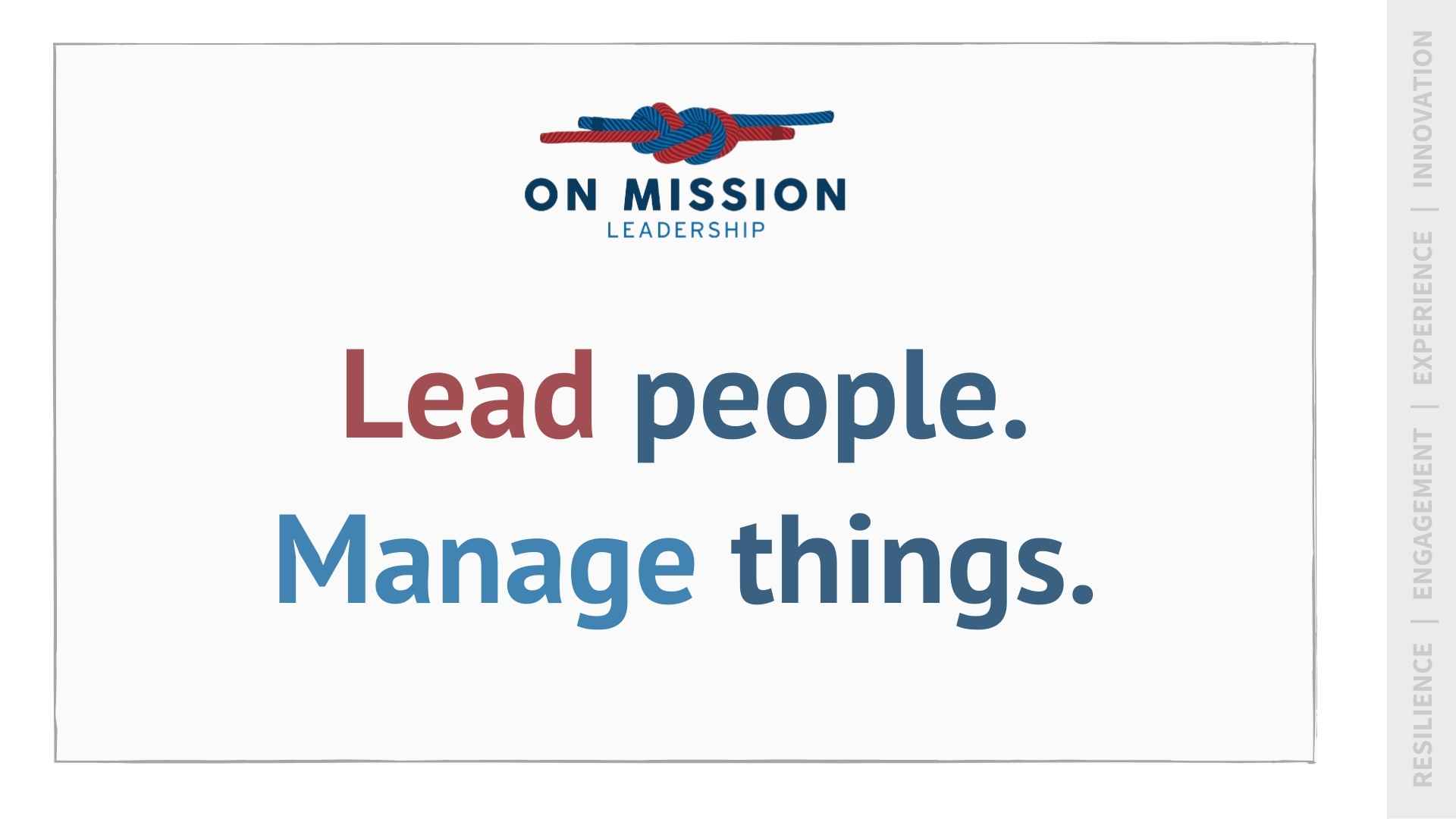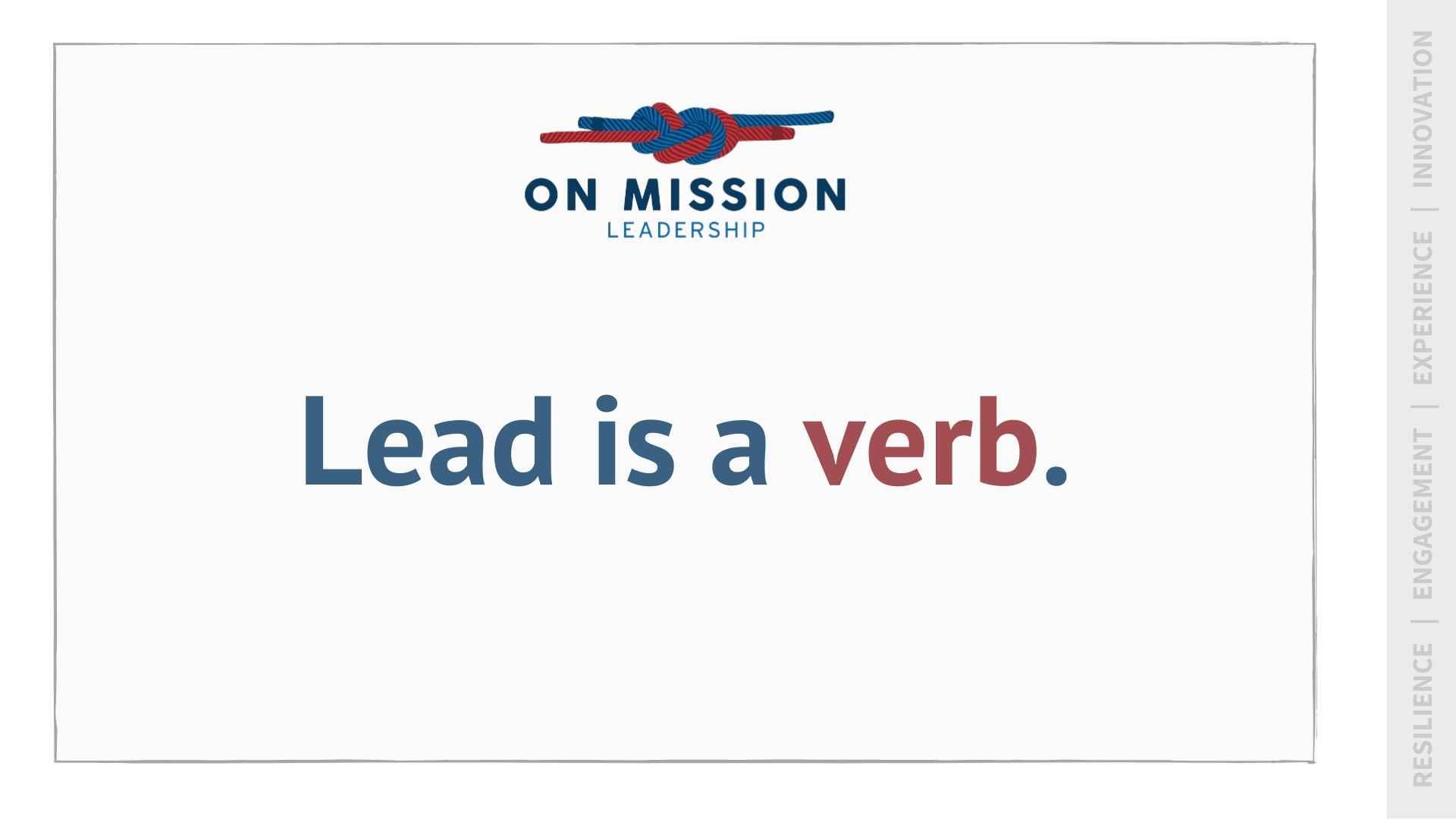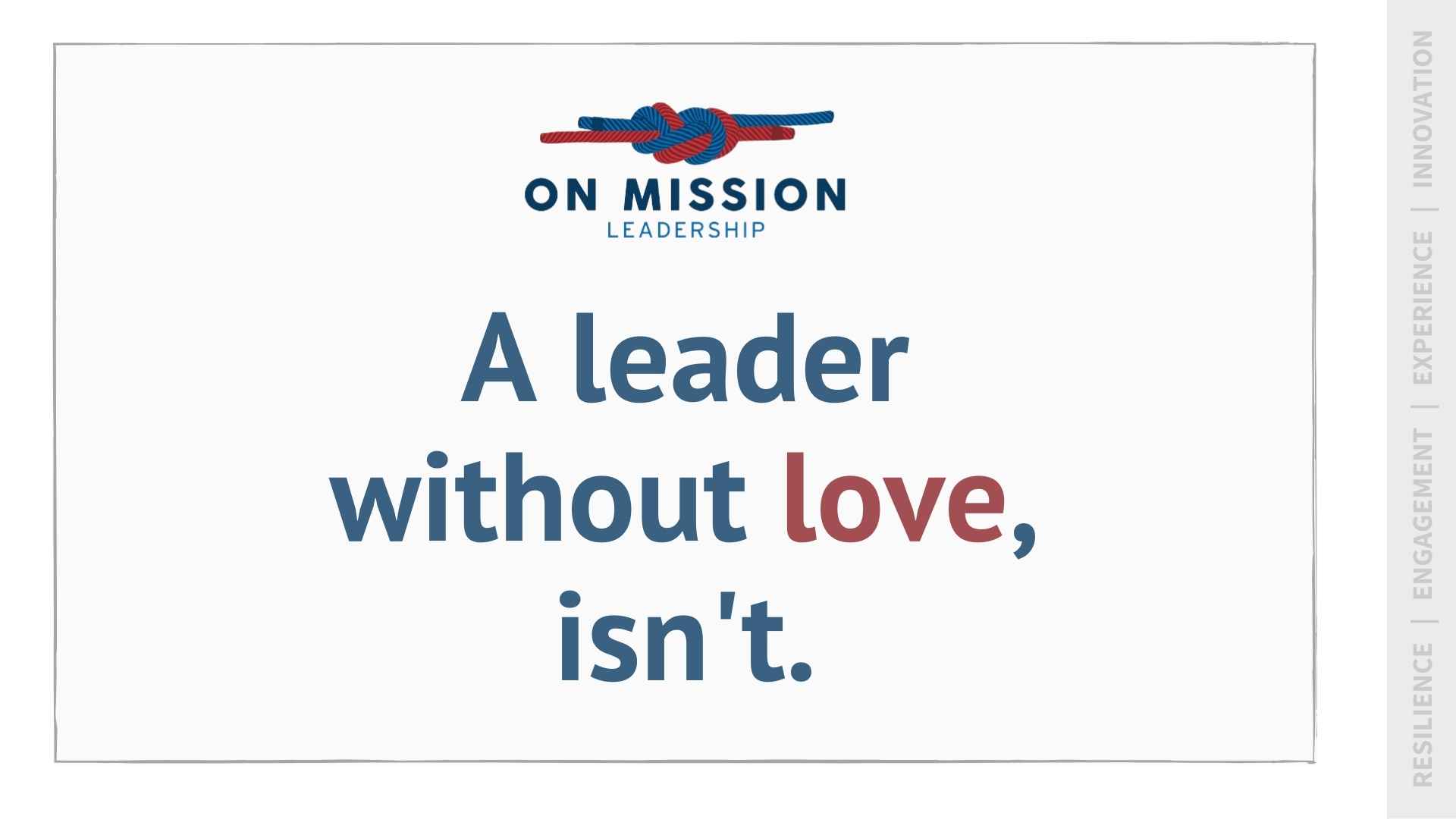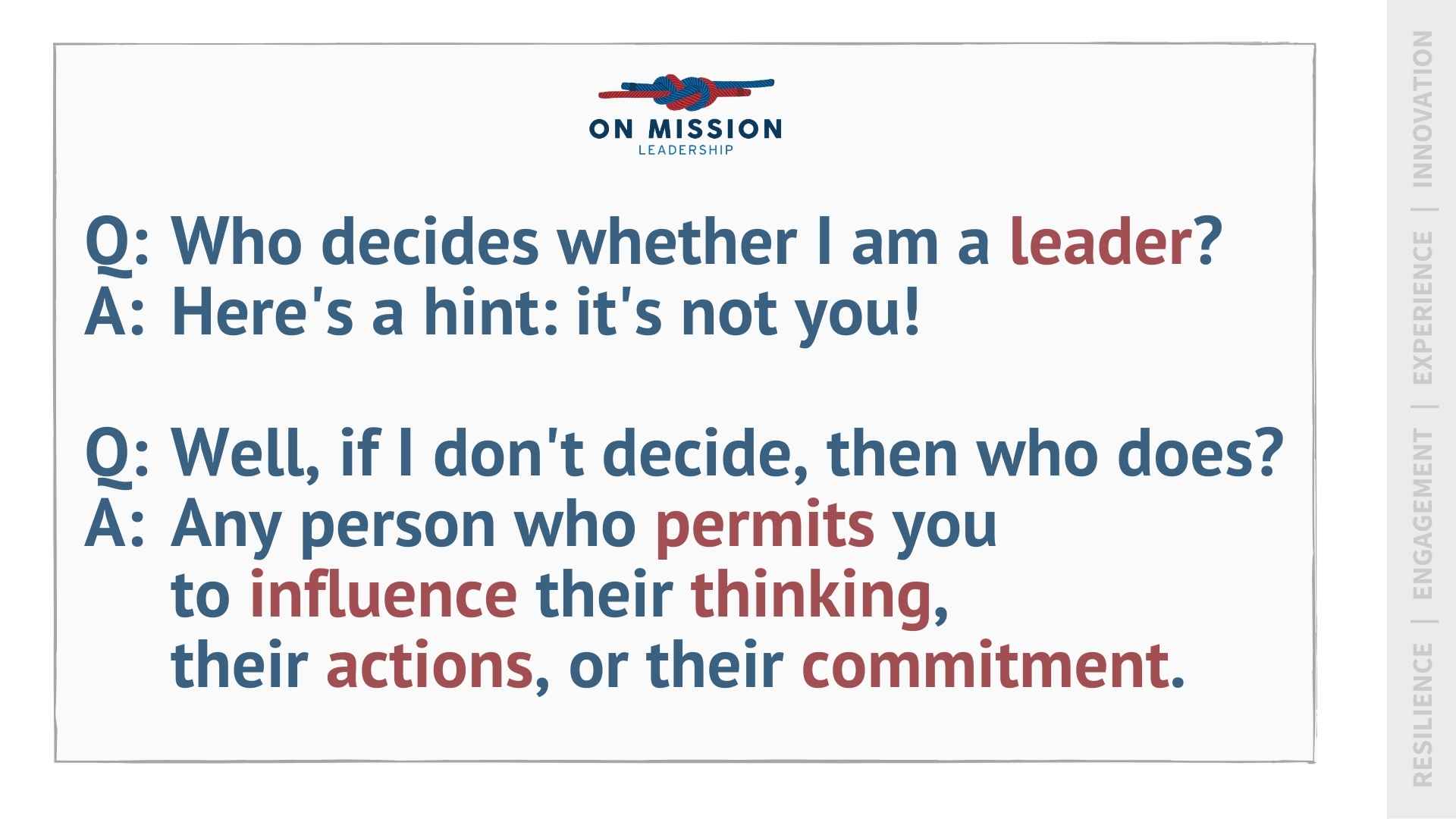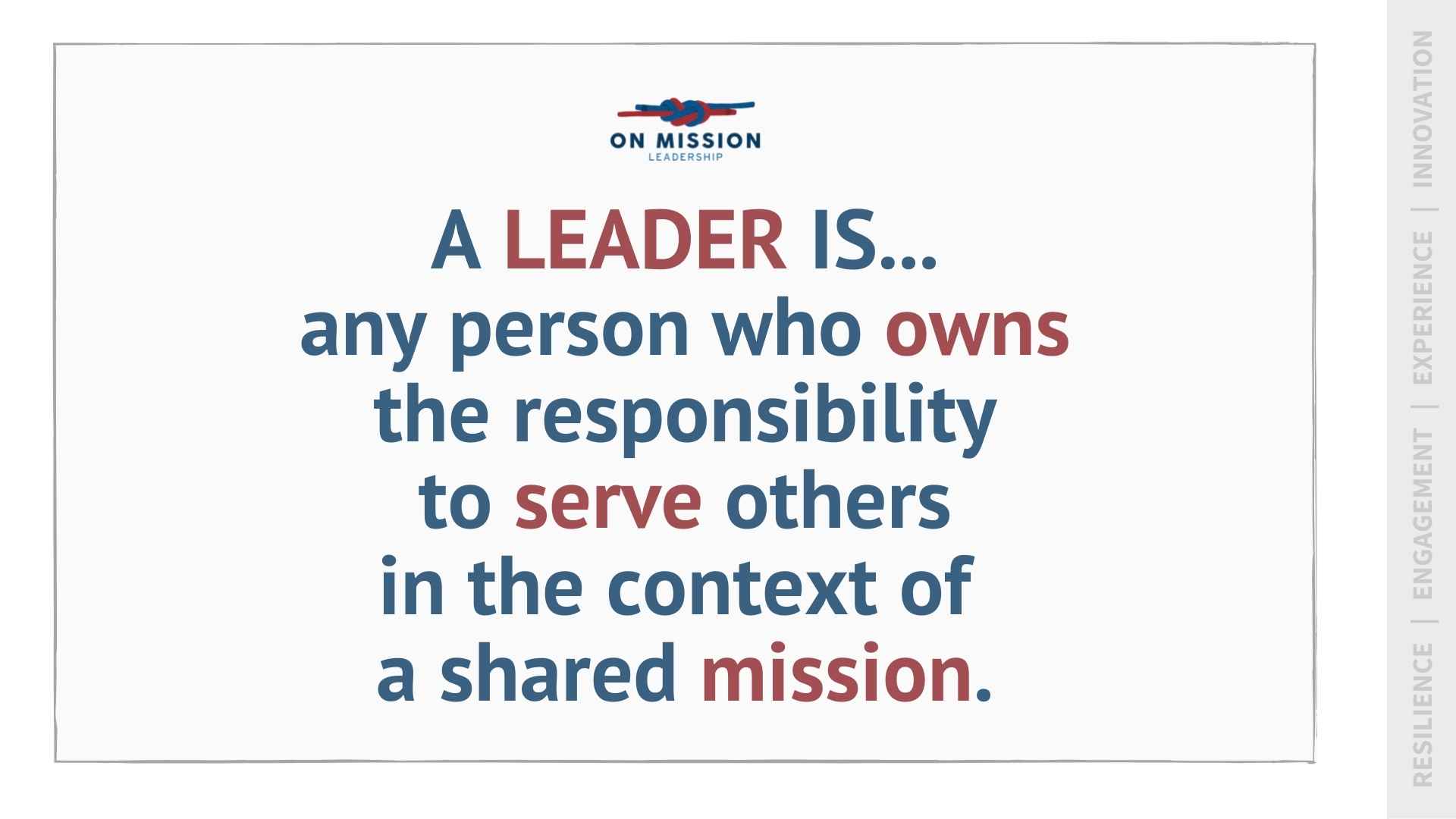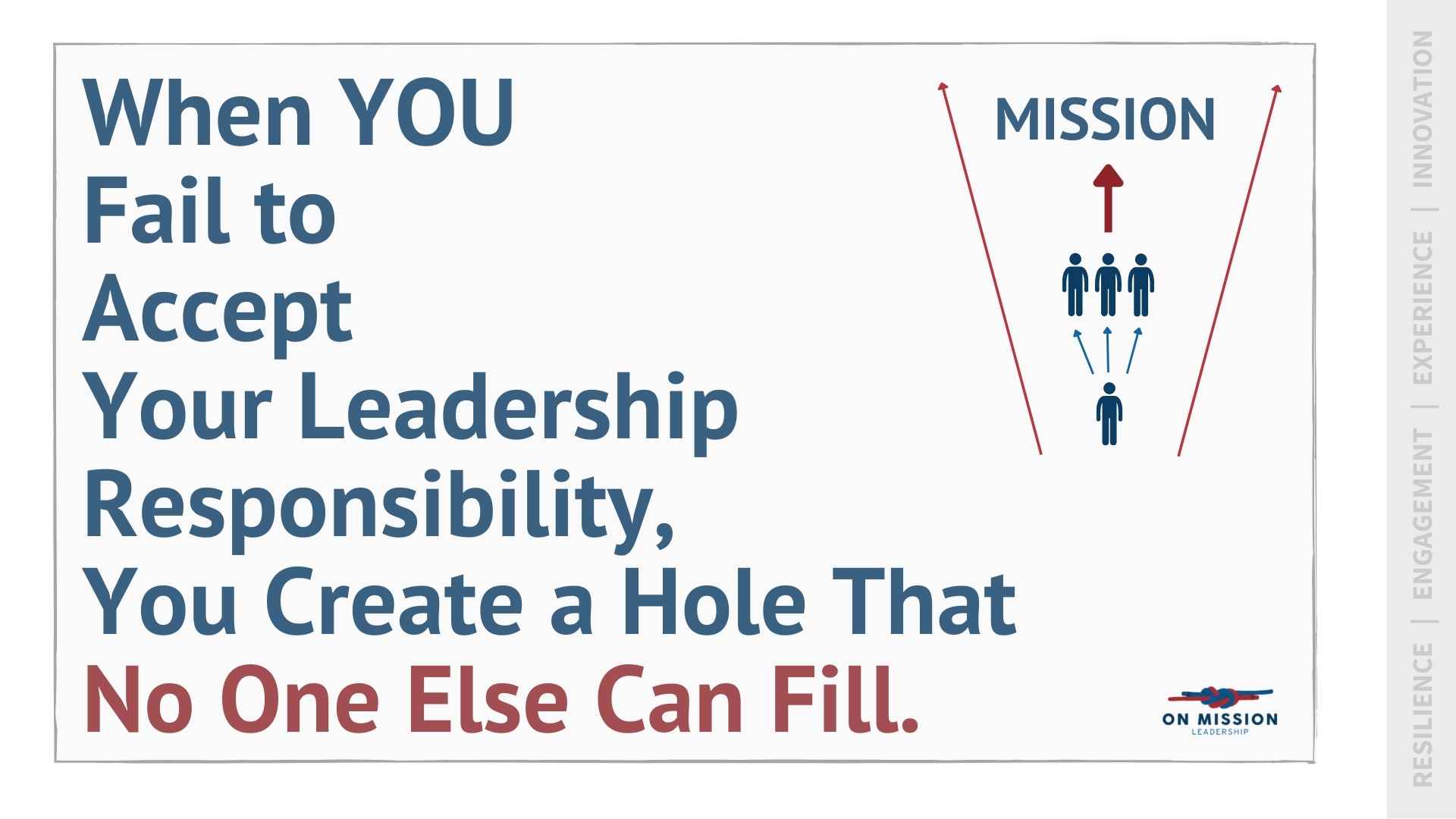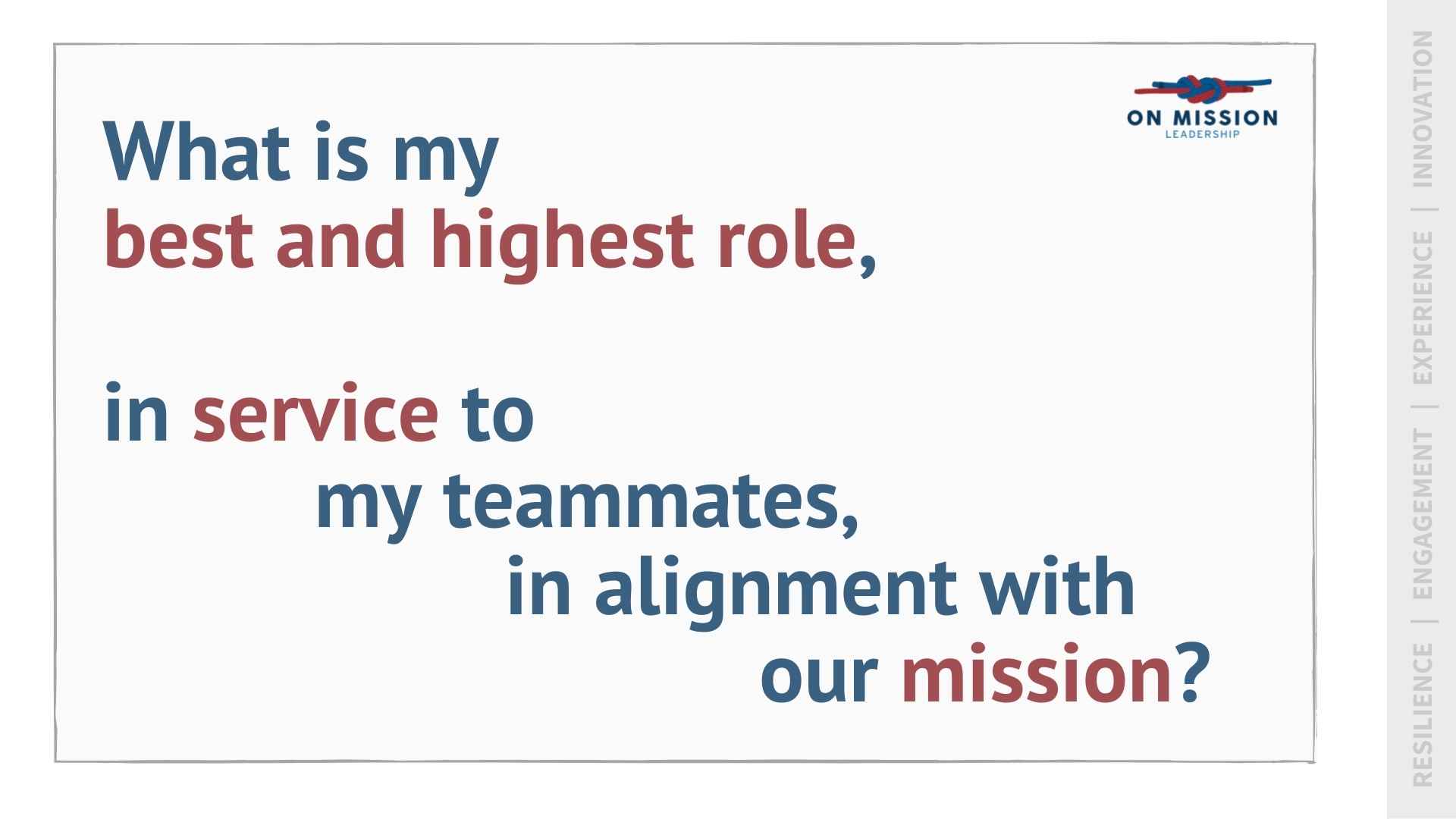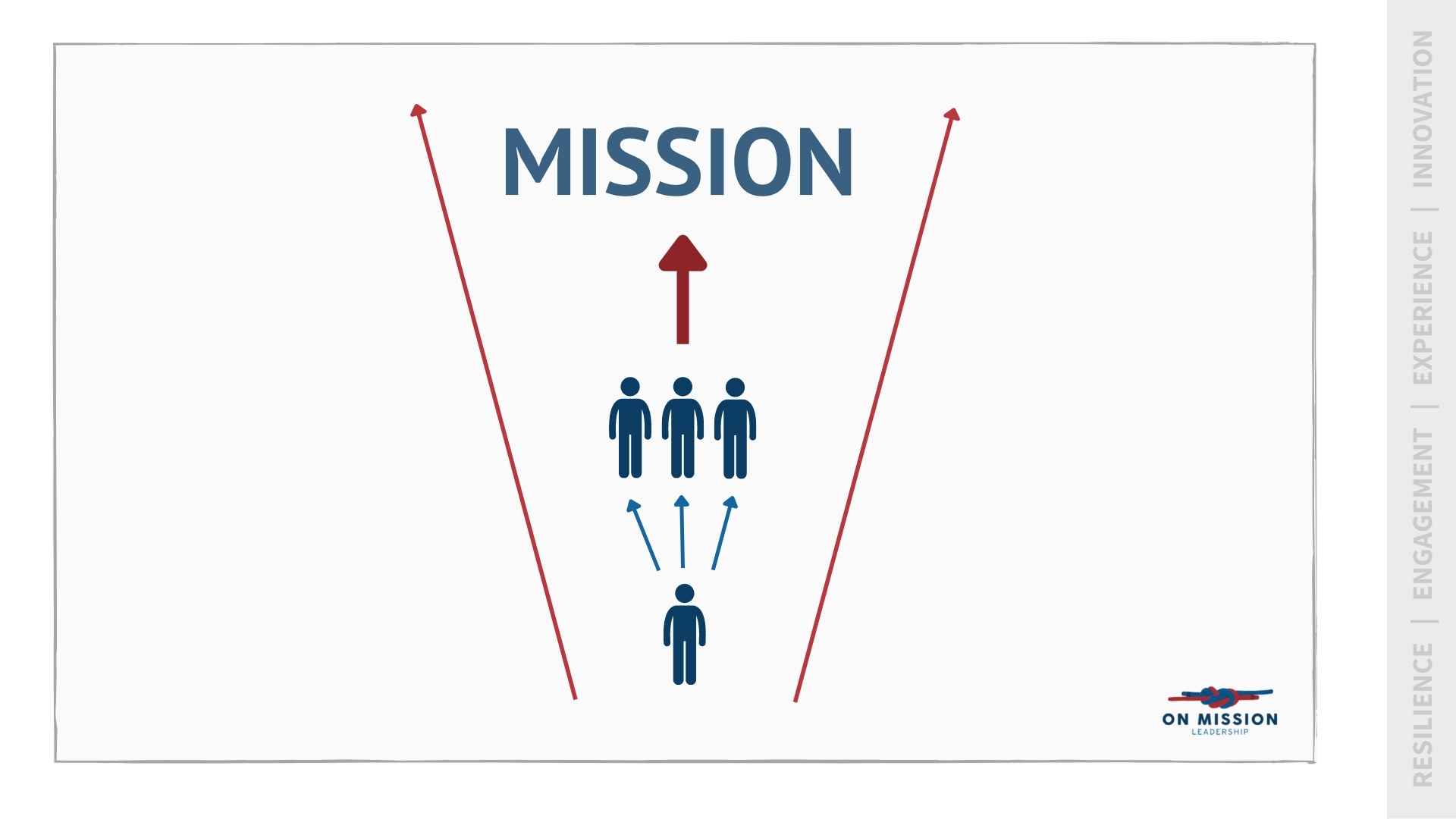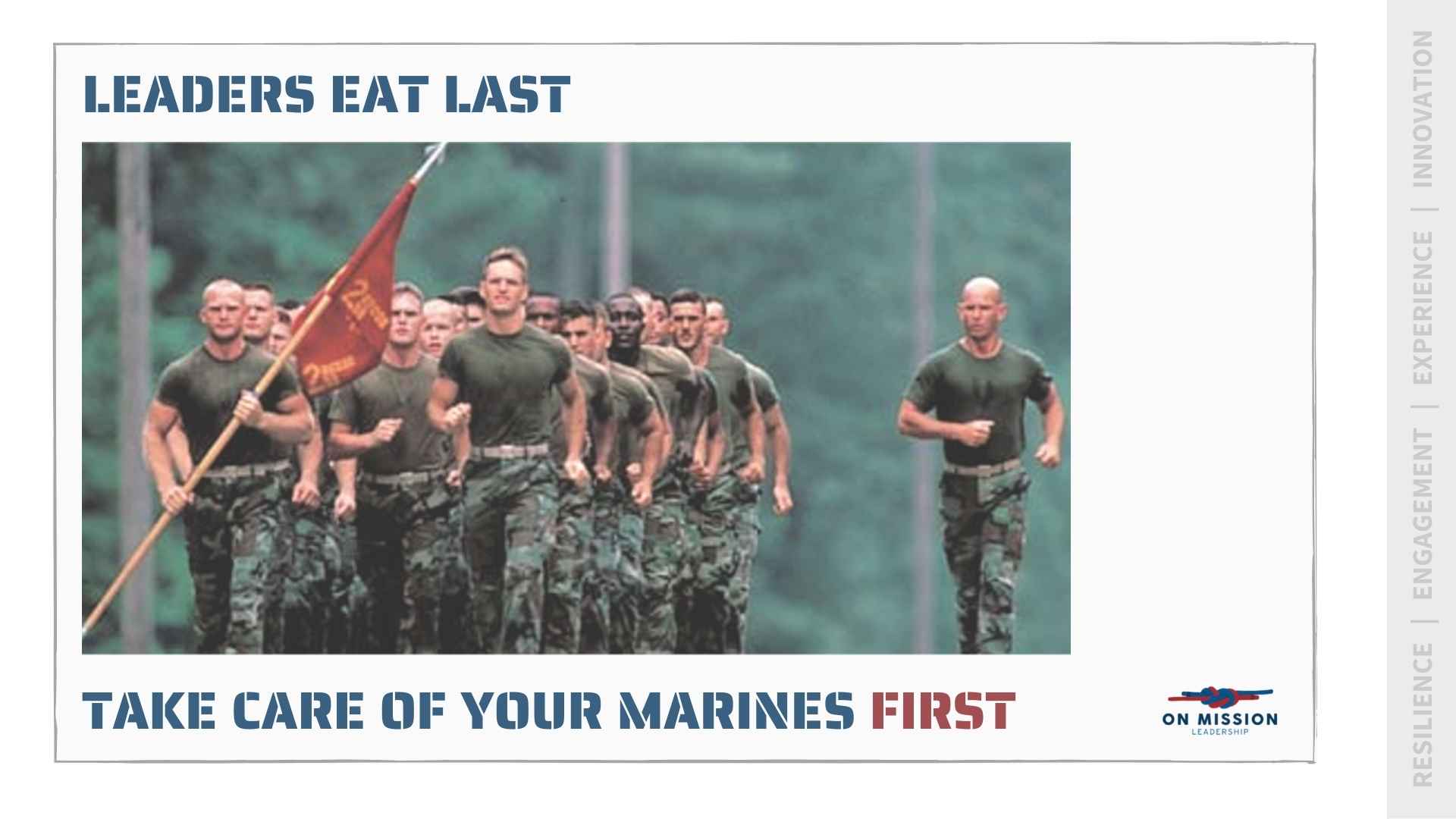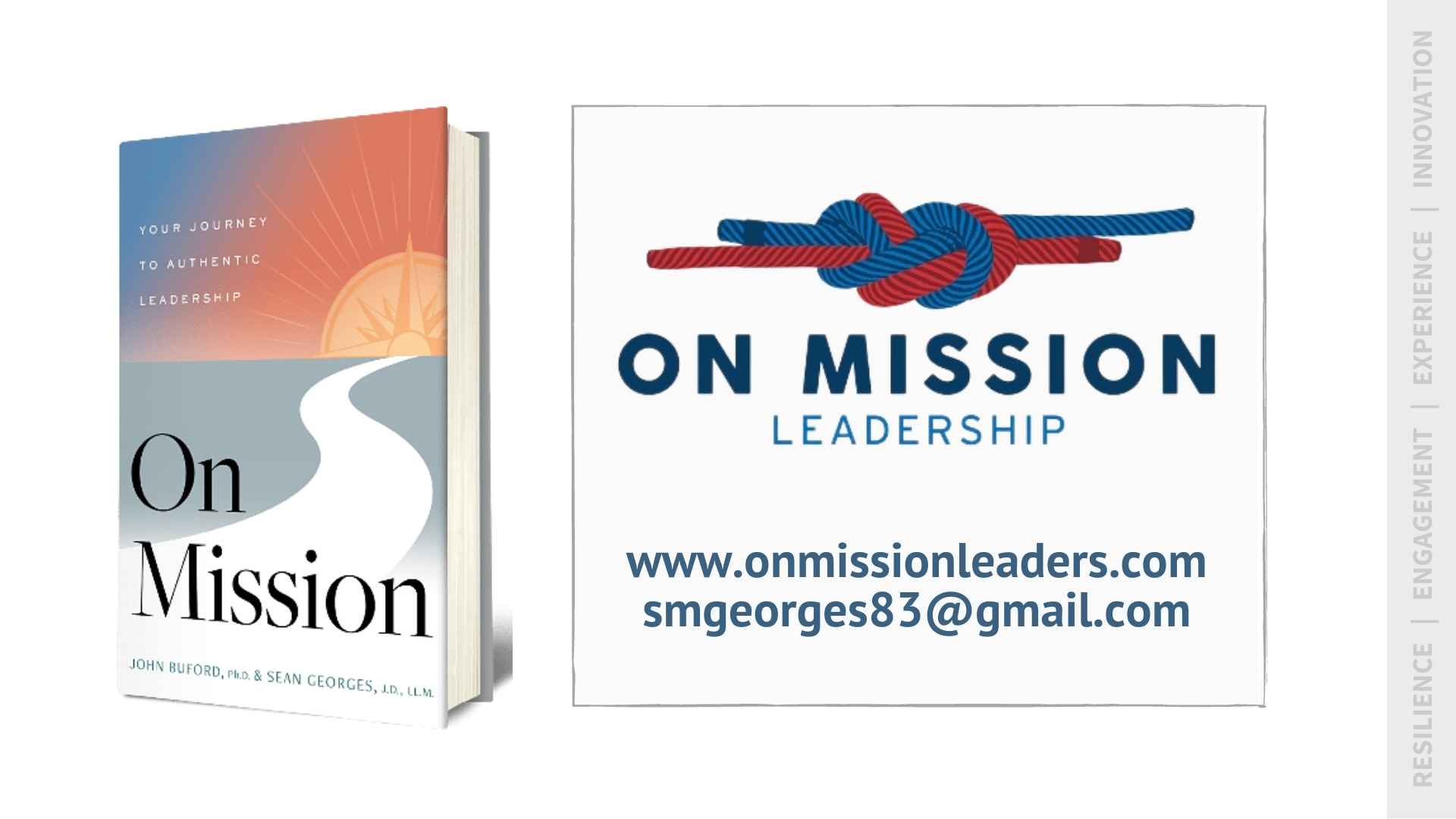
Trinity Health Transformation
Triannual I
Triannual II
Triannual III

- This event has passed.
Leadership Roundtable: Servant Leadership with Sean Georges
May 20, 2022 @ 12:30 pm - 1:30 pm

Featuring Leadership Expert Sean Georges, J.D., LL.M.
Through a powerful personal story, Sean Georges demonstrates the essence of authentic leadership. He shares how he came to see that servant leaders aligned with a common mission and a singular focus can achieve the impossible. Sean served for 35 years in the Marine Corps and civilian leadership roles and is now a speaker and coach at On Mission Leadership, an organization he founded to help provide leaders with a “north star” for their leadership development journey built on a powerful servant leader perspective and actionable leadership commitments.
Key Takeaways
-A leader is any person who owns the responsibility to serve others in the context of a shared mission
-Leadership is who you are and what you do to influence others to commit and act in alignment with the team’s mission
-In every situation, servant leaders ask, “What is my best and highest role?”
To achieve the impossible, leadership teams must:
1) Have a mission focus
2) Embrace shared leadership
3) Move as a team
4) Have the audacity of belief, and
5) Serve one another
Transcript
Claire Bosma, MBA, Ten Adams: So without further ado, [I’m] very excited to bring our speaker to the screen. Today we’ll be learning about Servant Leadership from Sean Georges who will speak about what it means to be an authentic leader.
This lesson is so important as we build upon the great lessons we learned during our first Triannual and supporting the focus areas that we identified: employee engagement, patient experience, and inspiring operational innovation.
Sean is a cofounder of On Mission Leadership and Co-Author of the upcoming book On Mission, Your Journey to Authentic Leadership. Sean recently retired after 22 years of service as senior Vice President of Human Resources and General Counsel for Shoe Carnival, Inc, a publicly traded national retailer with nearly 380 stores and over 5000 employees in 35 States and Puerto Rico, headquartered in Evansville, IN.
Sean graduated with distinction from the United States Naval Academy at Annapolis, MD. He accepted a Commission as a Marine Corps officer and was one of 10 marine officers selected to attend law school under the funded law education program. Sean received his Juris Doctorate from the University of Illinois and later earned a Master of Laws degree from the Judge Advocate General School of the Army at the University of Virginia.
During 13 years on active duty in the Marines, Sean served in numerous positions of responsibility from North Carolina to Okinawa. As a Judge Advocate, he served as Senior Trial Counsel and Senior Defense Council, Special Assistant United States Attorney, Deputy Staff Judge Advocate and a Senior Judge Advocate for the 31st Marine Expeditionary Unit, Special Operations Capable in the Western Pacific. Sean is a member of state bars of Indiana and Illinois and is admitted to practice before the US Supreme Court. His TEDx talk on the essence of authentic leadership has over 33,000 views. He frequently speaks on leadership, employment law, and HR issues.
Sean is now a leadership coach and leadership educator with a focus on equipping and supporting your leadership development journey.
Please join me in welcoming Sean Georges to our first Leadership Roundtable.
Sean, meet the leadership of Trinity Health.
Sean Georges, JD, LLM: Honored and humbled. Thank you so much. Thank you for giving me this opportunity. I’m particularly excited for two reasons.
Number one: I love medical professionals. I love your level of professionalism. I love your service, orientation and so, you know where would any of us be, but for you and people like you.
Secondly: my older brother played basketball for Minot – in Minot, ND at the at the college. It was a college, I think there, then. And I actually visited. He was playing in a holiday tournament and I remember this would have been in the early 80s. I remember waking up one morning and the national news was on and Tom Brokaw or someone said, well, the coldest spot in the Nation today is Minot ND- minus 50 degrees or something just unimaginable. So, in any event, I’ve had a little bit of experience and truly honored to be here.
Today we’re going to do a dive. I’m going to share with you things that I’ve learned with conviction after over 40 years of time spent at the Naval Academy, 13 years on active duty in the Marine Corps, civilian practice of law, and then 22 years in corporate America, which I recently left.
And, nothing I say is, do I believe, anything really that you don’t already know. That’s one of the things I love about authenticity in leadership. And at the heart of being authentic in our leading is this idea of service. The core perspective, the place in which we engage the people around us, our teammates, the members of our family, members of our community, those that we serve is the perspective of a servant.
And it’s from that place that this actually works. And it took me a while to really grab a handle onto this, but it has really come together and I’m going to share some wisdom that I hope will impact you.
You know it occurs to me that we don’t do a very good job in this country of developing leaders. In fact, I’d say that we’re really poor in our effort. I applaud you and your team, your greater team because you have got you know you’re among the fortunate few.
You work with an employer who sees leadership as being an important responsibility for all of you, regardless of rank position – whether you’ve got a MD, an MBA or if you are in some other support position in service to your client base.
But, the fact that your employer is willing to invest in it is just powerful and puts you, I think, a step ahead. Here’s what we do know, though, and what I’ve certainly known –
No single book, no single program can successfully transform us somehow magically into becoming an authentic leader. That happens through our life’s journey.
Someone used the word quest that it’s sort of a quest for knowledge and competence and ultimately confidence in leading. So, we’re going to explore that a little bit.
I’m going to share with you learnings that I’ve had and I hope it adds to your ability to do what you do across the spectrum of your life. You know the whole learning, this whole development is ultimately not up to someone else. It’s going to be up to you individually, but we can help serve one another collectively because leaders are largely self-made.
You get to decide how this journey is going to go, and you know if you do it right. If you’re doing it right, you will be learning until your very last day walking this earth.
I’m going to try to advance here, it’s not letting me advance. I’m sorry there we go. Try it one more time. You have to be patient. Patience is a virtue.
Here’s what we know.
FAILING TO ACCEPT YOUR LEADERSHIP RESPONSIBILITY
We know that when we fail to accept our own personal responsibility to lead (and we’ll, we’ll go through that definition) we leave a hole. There’s a hole in our life at home, at work, in the community.
If we fail to embrace our individual leadership responsibility, no one else can fill that hole.
No one has the relationships we have. No one has the responsibilities we have in our life. It is up to us.
And, if we’re waiting for somebody to come in either a helicopter or ride in on a on a horse to lead in our life, then they’re not. That’s not happening. The cavalry is not going to ride.
We are it.
But when we join together as a group of leaders who serve, and as a team of leaders, that is the most powerful, most powerful force I have ever observed.
Which is, when you can put together a group of folks who are mission focused and if you look on the right of the slide, what you’ll see we’ll do a deeper dive in it, but at the top is mission. That’s the reason why we’ve joined together. The reason why you have these people attracted and working together, bringing their skills and passions and abilities to accomplish a mission. And when we’re leading as we’ll talk about here in a moment.
You’re the one at the bottom. You’re at the bottom looking up finding ways to serve your teammates so that together – that big red arrow – you can accomplish the mission.
But first we have to embrace the responsibility.
LEADERS EAT LAST
Just a little bit of background, you know not to talk too much about me, but I just want you to know where I got the concept. It came very organically. It came fast and furiously.
I remember the summer of 1983 after I graduated from Annapolis, I entered the basic school in Quantico, Virginia and there was this phrase that kept rolling around. You would hear it sort of echoing off the walls. It was in the water we drank. It was, you know, in the Kool Aid if you will. But there was this constant drum beat of this concept “Leaders Eat Last” and I remember the first time I heard that.
I thought, all right, well, that must be a clear instruction on where I stand when I’m in the chow line so at the chow hall then my teammates are going to be in front of me and I will take the position at the very end of the line and I guess that’s a Marine thing. Well, what I would quickly learn is that it really meant everything.
It meant everything. Leaders eat last. Your Marines are first. You take care of your people first.
Doesn’t mean you don’t, you know, self-care, wellness, getting what we have to do in order to function for ourselves so that we can serve isn’t important, but it is your teammates first. You see to their needs primarily and then you make sure that you know you’ve got what you need. But, in the Marine Corps we learned with absolute certainty that when you’re leading, your responsibility is to serve your people in the direction of your mission.
Service, sacred responsibility to serve your Marines in the direction of mission. And it’s true in the civilian world and this journey I’ve been on has really been to discover and cement, kind of, the foundation of leadership in my mind.
And I can tell you that this is the foundation for authentic leadership. Not fake posturing, puffery, “How do you like me now? How am I looking?” But the real thing – “What moves human beings to accomplish a shared mission?” It is this approach, this perspective on leading and, believe it or not, when you look at this picture, that person in the middle, up front was me many years ago.
Ugh.
And, we were running in a formation and sometimes I’ll use this picture and sort of ask the question “Who is the leader in this photograph?”
Just to kind of orient you a little bit the Marine on the far right with no hair – great looking hairdo there – is calling the cadence. He’s a staff noncommissioned officer. He’s keeping us, you know, our feet are hitting the pavement at the appropriate time and he’s calling out one of these jodies – he’s keeping us moving forward at a certain pace.
Is he leading? Absolutely.
Look at the Marine on the far left with the big arms, the big guns holding the, I mean he’s the standard bearer, literally.
Is he leading? Oh yeah, he’s setting the standard. He’s holding up the right flank of the organization.
You could say that maybe I’m the leader. I am the commissioned officer front and center.
Am I leading? I’m leading, but guess what, every single member of this recon unit was leading.
They helped each other get up that morning, get their uniforms together. They encouraged, inspired, kept morale up. Leadership was happening in reality across and throughout this team, sometimes simultaneously at the same time. I like to call it a leadership dance.
It’s what happens on the best of teams. There is not just one leader with the title and barking out orders and everybody standing around waiting for instructions. It is much more real time, organic, as opportunities arise, people are taking initiative, providing feedback, teaching, coaching all the time. It is communication is constant so that is the model of really, a team that is operating – and I’m not saying because I was on the team – but that is a symbol of teams that are operating at their highest level. And again it is not a single leader from the top. It is multiple leaders on mission, moving in the direction of mission.
WHAT IS LEADERSHIP
We use the leadership word a lot. A lot. What in God’s name does it mean?
Well, with a friend of mine we wrote a book that’s coming out in August called On Mission. It’s the name of this organization that we developed and we spent a long time about 10 years really refining, not only writing, the book. (Yeah, it took us 10 years. That’s what happens when you get two marines and you give them a typewriter and/or a word processor.)
But, here’s what we have come up with – that leadership springs from who we are. So, leadership is who you are and what you do to influence.
So at the heart of leadership is this concept of influencing another human being. And how are we influencing? We’re seeking to influence their level of commitment and their actions in alignment with the team’s mission.
So, who you are, which then influences how you behave and engage and act, that then influences another human being – even one other – where you have a shared mission in the way they commit, and the way they act.
There it is. There are many out there, but this one absolutely works for us. We refer to folks in this context, as our teammates, because we share a mission so you’ll hear me using that term from time to time in the course of this presentation.
It took us a long time to get to simplicity. My buddy has a PhD. I’ve got two law degrees – don’t hold that against me. I always usually try to keep that. I’m one of the good, good lawyers but what we tried to do was boil this thing down – in what would a back of the napkin look like – on what it means to lead and what a team does. And, so here’s what we came up with.
Simple, doesn’t mean it’s easy. Simple though, at the top is your mission, and it can be a family, right? It can be a project. It can be a war, an organization, entire organization, or a department, a subset. It can be an initiative, can be a community kind of a project or an initiative. But there it is at the top – big bold letters. That’s the thing that brings us all together. That is why the team was formed and exists in the 1st place. So, being clear about the mission and defining the mission is critical.
TEAMMATES ON THE MISSION
The next element as you move from top to bottom, they’re your teammates. That’s your team. There may be one. There may be 250 or 1000. There might be 3 on a project team. You think about your family, could be a few there. They are unique individuals with certain ambitions, weaknesses, strengths, incredible capabilities.
All of these things, they come together for whatever reason, attracted to this mission. And where are you when you are leading? And remember this please, we are not always leading. Sometimes we’re just being a good teammate. Sometimes we’re following another’s lead.
But, when you have a shared mission, when you are leading, conceptually, this is what it looks like – you are at the bottom.
I don’t care how many degrees you’ve [got], I don’t care whether you went to – I mean I care, but it doesn’t matter what title you have, how many letters you have after your name, whether you went to Harvard Medical or whatever – you are conceptually with this human being in front of you or this team -you are conceptually at the bottom. You are looking up and you are looking up.
These arrows should probably actually be two-way arrows. You are building, you are in relationship, in engagement with your teammates, and what happens is when you take this service orientation in everything you do, they are not there to serve you. Even though they might be in that moment, bringing you something you know in the operating room, whether it’s a file, information, bringing you context, bringing a sense of urgency – whatever it is – you are conceptually there when you are leading, to serve them.
Through your example, through your actions, through your behavior, in the way you are engaging. You are there to serve them so that, that big, thick, heavy red arrow? Now we’ve got a team moving in a committed way towards accomplishing a shared mission, and that is powerful. That’s how you get to initiative. That’s how you get start developing people’s potential, and that’s how they bring creativity and energy. When you’re at the bottom – and this can be a tough thing for some – people’s ego is important. To us as human beings, there’s a healthy level of ego. But there’s also the concept – and these can exist at the same time – of humility.
HUMILITY
True humility is not thinking less of ourselves – it’s thinking of others first. Not thinking less of ourselves, but thinking of others first. And in fact, thinking perhaps of yourself less as C.S. Lewis would say it. So, you can still bring a healthy level – listen, own your gifts, own the ones you earned, own the ones you went to school for, own, you know what God gave you and what you developed. Man, own those gifts. We need those gifts, but when you’re engaging with the people around you, your teammates, you are doing it with a sense of humility. Your responsibility is to elevate. To elevate them so that again the team, so that together, you with them can accomplish the mission. And you know one of the things I know, service is a concept just central to what you do for a living.
Service can only come from a sense, a true sense of humility that we are there to bring something to the table. To give something, to serve the needs of those who come to us. So, leadership is at bottom line a sacred set of responsibilities.
It is a sacred trust between you and those you serve, and that is a burden worth giving some attention to. So, if you remember nothing else from this old guy, this Marine who you know spoke to you here today, if you can embed this in your mind’s eye. That’s why we made it so simple, because you can carry it around with you. You at the bottom. OK, I have an opportunity to lead. It’s me at the bottom. I am serving this person standing in front of me in the direction of mission.
That’s powerful.
OK, I hope that makes sense. It’s not the other way around – top down. That’s management. [We’ll] talk about that here in a second.
BEST AND HIGHEST ROLE
When you’re in this place, humbly leading from the bottom looking up at your teammates or your family members, your wife, your husband, your children, your member of the community, your, you know, clients, the people that you are there to serve – you’re asking yourself one simple question.
And it is this – and you can shorten it to the first phrase – “What is my best and highest role?”
And in more detail, in service to my teammates and alignment with our mission. How can I serve them? And listen to the answer. The answer might surprise you, and it could be a whole range of
things. It may be leading from the front – “follow my lead, let’s roll.” It may be, “I just need to listen. They need me to listen. I need to fully not fix, not find solutions. They need me right there with them full attention to listen to their concerns.”
That may be your best and highest role. The answer may be “I need to get out of the way.” I may need to give them an opportunity to lead. So, one of the best ways, most effective ways to find out what another person or a team needs when you’re trying to determine what’s my best and highest role to serve them so that we can accomplish the mission? Ask them.
Ask them. You can learn a lot from asking that question. “What do you need from me? What do you need most from me? How can I serve you so that we can move in the direction of finding a solution?”
You know, defining the issue, whatever, dealing with you know, all of the issues you have to deal with – budget, personnel, organization, just the whole range of things we have, so that is critical.
So simple perspective, simple question. Not always easy.
A LEADER IS…
So who is a leader? What is a leader? Well, it’s any person who owns their responsibility. That is it. There is nothing in here that says anything about the degree you might hold, the title you might have, where you fall on an organization chart. It is not there.
This is how simple. If you own it, if you embrace it, then you have a place from which to engage as a leader. So, here’s an interesting thing – hope you don’t mind me, I just had this vision of there’s Winnie the Pooh and Piglet walking along. And you know how they had those really cool, conversations and it just had this vision of Piglet looking at Winnie the Pooh, who is, of course, we know very wise. And Piglet asked “who decides whether I am a leader?”
That’s a great question.
Winnie the Pooh in his infinite wisdom gives a hint, “here’s a hint: It is not you.”
Piglet responds, “if I don’t decide, then who does?”
The answer: Any person who permits you to influence their thinking, their actions, or their level of commitment decides if you are leading in a particular situation.
Now this isn’t, I’m not quoting them, I’m just using them as an [example]. This is actually our sort of quote, but isn’t it true when you think about it?
We can come in and announce, you know, I’m the chief whatever or I’m in charge. You know, I used to have a Senior Vice President title, General Counsel, when I was a Marine I was a Major when I left the Marine Corps. I can come in rank first and you know, stand there, and you know hands on my hips and say I’m in charge and well, that doesn’t mean anybody’s necessarily going to follow, does it?
I think Colin Powell said once, one time – If you think you’re leading and you turn around and nobody is following, then you’re just taking a walk.
We know how difficult it is sometimes to lead, to actually influence people, and you have got to win that battle, if you will, in order to gain that opportunity. And we believe that’s through our relationship and through our actions.
LEAD IS A VERB
Ultimately, lead is a verb. It is a verb. It springs, of course, from our values and the way we view what’s happening around us. But ultimately, people follow our actions, our behavior. So, if we pay attention to our actions, if we pay attention to the example we’re setting and guess what? You’re always setting an example – always. The way you talk to people, the way your level of calm when calm is called for. Maybe a little bit of energy when that’s called for.
How do you engage when times are tough? How do you handle stress? How do you handle self-care? How are you taking care of yourself? All of these kinds of things.
How do you handle relationships? You know, in the workplace and at home. All of these things matter, but ultimately it comes down to lead is a verb. It’s not title, it’s not rank, it’s not position. I know I’m beating that dead horse. It’s an important one because we’ve learned some bad lessons in life.
LEAD PEOPLE, MANAGE THINGS
And here I think is a really critical point about leadership. We mix terms and we mix concepts.
One of the things we’ve done in the book and one of the things I’ve tried to be real crystal clear about in in the way I’ve conducted myself in life, is they support one another, but they are different functions requiring different things from us – maybe even different sides of our brain are functioning. And you guys can probably tell me that, but with people, we have an opportunity to influence – and I would say a responsibility – when we get that that opportunity to lead them.
We have an opportunity to lead human beings, things, processes, systems. All of those. That’s management stuff. We manage things, resources. But, we have an opportunity and a responsibility to lead people to influence them in the direction of mission.
And sometimes we mix it up and sometimes we try to manage people like cattle or resources or processes when leadership is called for. And that gets us to this really key point and you really can’t talk about leadership unless you go here.
LEADING WITH LOVE
A leader without love, isn’t. You cannot lead in an authentic way, you cannot engage with another in relationship, in an HR appropriate way, without engaging from your heart at some level. Even if you’re demanding, even if the situation is demanding and the stakes are high.
Some of the toughest people walking around the earth – well, maybe medical doctors and nurses and Marines, I might throw miners in there and first responders, you know – these are some tough people, right? The Marine Corps is sort of known for that.
What we also knew was this – when sometimes we were dealt with in hard ways, where did that come from? It originated from this person trying to make us better, trying to help us to find courage or to develop our potential. It was from love and you know, so management doesn’t require love. Management requires that we exercise, you know logic and processes and principles. Leadership, which is why sometimes it’s hard for people to get a handle on, it is where love comes in, and it’s not romantic love. It’s the agape Greek form of love.
But if you really want to get in to influence the commitment and actions of another human being, you have got to go here and you cannot fake it because human beings have a highly attuned set of radar when it comes to that. Be authentic. Be real. Care for them. Care for this person in front of you.
THE AUDACITY OF BELIEF
And I want to tell you tell you a story quickly. A brief story.
This young lady on the right – this was Payton.
She woke up one morning, this is June of 2011. She got up to go to cheer practice that morning. She had been driving only a couple of weeks. She got into the family car, had a real short, short drive to make it to the local high school and she wouldn’t make it.
She came to an intersection that was in the local area close to her house and according to witnesses at the scene, looked, looked left, looked right and then entered the intersection.
That semi-truck is a fully loaded 18-Wheeler coal truck. Tonnage? No one knows what the tonnage was. It struck, her directly. T-boned directly on the driver side.
Payton was pinned against the passenger door. Her neck was broken at C1. Her ribs were broken. Her hips were fractured. Her left leg was broken in multiple places. Her lung was collapsed. She was bleeding out and for all practical purposes was on the very edge of death.
That’s when the first responders arrived and it was a team of teams.
There was a sheriff’s deputy. There was a police officer from the local community. There were a couple of, there was some volunteer firefighters from this small local town, all gathered together. It was a team of teams. And they gathered around that vehicle and they assessed the situation and they tried to come to a solution.
One of the members of the team, the sheriff’s deputy, climbed on the front of the car and he looked down through the sunroof. You can, you can kind of see it at the center of the car, kind of buckled up.
The car was literally about 2 feet wide by the time and folded and molded around the front of that truck. Because of his initiative and the decision making made at the scene, he was able to untie her shoes that that were caught on what was left of the driver side of the car and was able to move her feet. They were able to extract her from the vehicle within moments.
They didn’t require, they called off the life flight helicopter and they didn’t have to cut her from the vehicle. Then placed her, extracted her from the car, placed her in the hands of an ambulance crew, the ambulance crew goes to the hospital.
She’s now placed in the hands of the of an emergency group of doctors in the emergency room, and nurses and support personnel at the local hospital and they assess the situation. Parents are called. Parents arrived and are informed that she’s going to need to go to a Children’s Hospital in Cincinnati. Helicopter is now spinning.
On the helicopter pad at the hospital, Payton is placed in the hands of a three member helicopter crew and when she arrives on the ground at Cincinnati Children’s Hospital an eight and a half hour surgery occurs to place two titanium rods and six screws in the back of her skull and the outcome is not likely.
Not a single person at the scene, not a single first responder thought she would survive, but everyone worked as if and as though she would.
Payton is, I’m sorry. I told myself I wouldn’t do this. Payton is my daughter.
Peyton lived.
Because she was in the hands of team after team after team of professionals.
She just celebrated her 10th, what she calls “life day.” She now can talk about this. She didn’t want to for a long time. The picture on the right is actually her now.
I am, here’s the thing. I didn’t tell you one reason why I’m so happy to be here today is because of your service and your professionalism and it’s about teams. It’s about selfless leadership.
During the course of her long, incredible recovery, I looked back. I kept looking back. What, how did this happen? What did this team do at the scene? How did they possibly save her life?
And if we can get to it here, I’ll tell you what I learned.
HOW THEY ACHIEVED THE IMPOSSIBLE
I met with every single person who had a hand on her body from the time she left our house that morning to her full recovery. And here’s what I saw and what I learned, and I said thank you and they all got a hug whether they wanted it or not.
My initial focus was on the 1st responders – clear mission focus. They weren’t there to check traffic, they weren’t there to see what the weather was like at the intersection. They were there to assess and save lives. Clear mission focus.
They shared leadership. No, the doctor, the president of the hospital was not on the scene. The chief of the fire department was not there. The sheriff of the local county wasn’t present. What did you have? You had leadership being shared at that level, at the team level. They moved as a team. It was a coordinated effort back and forth. Communication, rich communication, problem solving, initiative was happening. Nobody was standing around waiting for orders to be issued, and then once they received orders they would move. That’s not how it worked. That’s not how teams work.
They had the audacity of belief and I know you know what this is. Despite all the evidence to the contrary, they, and all the evidence was to the contrary. She’s gone. All of them told me, listen, none of us thought she would make it.
She was gone.
That young lady will die between here and in the next 10 miles before she gets to the hospital. But they worked as if and as though she was going to live, and that audacity of belief was a self-fulfilling prophecy and I’m convinced the reason she lived.
And what did they do? Everyone, they weren’t out to serve themselves. “Hey, look at me, I can. I know how to use the jaws of life.” We’re good, we don’t need you because we don’t need the jaws of life. You know this wasn’t about self-promotion and in fact not a single, first, I had to dig to find these guys, men and women. I had to dig and they didn’t, this wasn’t about them. This was about the mission and about one another.
When I interviewed the folks in the ambulance as they were leaving the scene, I asked, and I don’t know where this question came from, but I said “did you say a prayer for Payton?” And the driver of the ambulance said, “you know I knew the family had that part down. I’m sure those prayers were going to be going up,” he said. “I did say a prayer though. I said a prayer for my teammates in the back who were doing everything they could to keep your daughter alive.”
That is what happens on real teams. They serve one another.
Thanks for letting me share that.
EMBRACE YOUR LEADERSHIP QUEST
Listen, I believe this. I think that we all have an opportunity to lead in an authentic way. I want to challenge you to embrace this really leadership – you call it a quest, I call it a journey.
I think we have an opportunity to grow and develop as leaders and nobody is going to do it for us. We can learn to lead when we’re following – what resonates, what works, what doesn’t. We can learn to lead and to know what a team is about by being a good teammate. And we can also learn how to lead of course, when we do have leadership responsibilities, by having a correct leadership orientation – viewing ourselves as a servant, with a mission alignment serving our teammates.
But it is a lifelong learning process and when we can get deliberate about that change, this sort of fractured learning journey into a deliberate journey, then, the things that happen around us become yet another lesson.
PHD IN LEADERSHIP
And one of the things I’d like to share is something that I found in one of my readings, by Dee Hock who was the founder of Visa, and this is how simple it is. So, let’s get our PhD in leadership. You don’t have to do this real time, but try this.
Make a careful list of all the things done to you that you abhorred, that that you despise,
that demotivated you, that, you know, uninspired you (to misuse the English language, which I often do). Make a careful list of those things.
Don’t do them to others, ever.
Do this with your team sometime. OK, we’re halfway to the PhD, ready for the 2nd semester.
Make another list of the things done for you that you loved, that elevated you, that inspired you
that moved you, and that connected you with mission. That moved you in the direction of higher performance and greater involvement. Make another careful list of those things.
Do those for others, always.
This is not rocket science. It is not brain surgery or heart surgery. That’s how simple, but it’s the intentional, deliberate, and committed effort towards operating because what are people asking?
I’m going to lead you, well are you?
Who are you as a leader?
Why should I permit you to influence me?
What do you stand for?
These are some of the questions they’re asking in their head.
What do you stand for?
What will you tolerate?
What do you not tolerate?
What can I expect of you?
What will you expect of me?
And how will I be treated?
How will you treat me? You need to be answering those questions of how you conduct yourself. I hope that makes sense.
ON MISSION LEADERSHIP
And you know, this, I want you to get deliberate. I encourage you to be deliberate about this journey, that we’ve all been on the journey. Now it can become intentional, and we’re going to try to add to your journey in August.
A little bit of a commercial here. There’s a picture of the book that my buddy and I – we’ve been friends since 3rd grade, both served in the Marines, he’s been on the been teaching at a university in western North Carolina, I’ve been doing my thing in corporate America – but it is about a journey to authenticity in how we lead and hopefully we’ll get some information out to you on this.
But, I am honored and humbled to have had the opportunity to speak with you today. Thank you.
Claire Bosma: Thank you Sean. Wow, what a meaningful, extremely touching lesson that you have shared with us today. We are deeply grateful for your time and your story and your willingness to share.
I want to open up the floor for questions. If anyone’s got some thoughts while we’ve got Sean here, we have just a few more minutes to kick us off.
I’ve got one here from the group, so at one point, Sean, you, you showed your graphic of leading from below, right? And you mentioned that above you, who you are leading can be a series of unique individuals, so a diverse team. And how do you lead through or overcome, maybe, a team that is diverse or may have varied opinions and approaches to things? So, any thoughts on how to lead a team that could have a lot of different backgrounds and experience levels?
Sean Georges: Absolutely, and right, that’s exactly what you want. You want diversity of experience. You want diversity of background and approaches to bring to the table. You know one of the first things you have to do is you have to come to know these people. You have to.
So, on a one-on-one basis, build your relationship and you know what, “we’re really busy, Sean, I don’t have time to like come to know these human beings.” That’s how important it is – you have to make the time. Find the time to begin to understand where are they from, where they coming from, what are their strengths?
How can you possibly deploy strengths, shore up weaknesses and opportunities, understand ambitions and where they’re going and sort of how they got there. Why they’re there. How can you possibly influence a team in the direction of a shared mission unless you take the time to develop and build, at some level, your relationship with them. And once you know that, or help them to discover their strengths, now you can really get involved in engaging and creating an environment that allows them to bring those differences to the table. That that’s the only way.
But you can’t dance around it and pretend like we’re all one. Even in the Marine Corps, we may sort of all go through basic training, and we’re kind of all maybe built a little bit the same way. But that’s where the joy comes in in leadership is the differences between us. Together, is what you’re stressing with them, is what together we can be.
That’s a part of what makes a team so powerful is those differences.
Claire Bosma: That’s really helpful, and I think as we all lead different teams to know keeping that shared vision and mission focus will help us unite maybe diverse folks.
You mentioned the word dance in your answer in the last one and I’ll follow up the next question along the same lines. You mentioned that leadership is a dance and can be organic, so, you know, in our day-to-day lives, what examples or any advice that you can give us just in the routine, maybe even the mundane, day-to-day, how to keep that focus and that little bit of inspiration close and near and dear as we go through a Friday?
Sean Georges: Absolutely, you know one of the most powerful questions you can ask a teammate – you know, let’s say you’ve got a common problem or an issue on the table – you might have the 100% solution.
Ask them what they think.
What do you think about this? How do you see it from your perspective? What would you do if you were in my shoes? It’s a great developmental opportunity, but also we know that we don’t know everything.
Sometimes, the people around us have a far greater and deeper understanding of a certain issue or things that we don’t see or know, and I think again when you’re when you’re humble, when you come from that place again of owning your gifts, but you come from a place of humility, you build, you create a space in this relationship, on this team that makes it not just possible for people to walk in and put something, you know, in front of the team, give you something, information, etc., etc., you make that part of how the team, how you roll as a team, become a part of the strength of a team people can bring problems without fear of retribution to the table.
They can, hopefully with maybe with some solutions or recommendations. I mean, you’ve got to make it safe for those kinds of things to be brought into that space. But, leaders create an environment, and when you base it on humility, knowing that you don’t know everything, knowing that some of the best solutions are those that are, maybe it’s an 80% solution brought by a team or a person who’s now going to own it and run with it and iterate and iterate until it’s better than your “perfect, 100%, I’m the smartest person in the room.” Even if you are by some measure, you don’t have to conduct yourself in that way. Your job is to help spread and share and access the intelligence, the IQ of the whole team. So, that requires humility but it is powerful.
You can do it this afternoon or tomorrow.
Claire Bosma: No time to wait!
So, I think maybe have time for one more.
In today’s climate, retaining employees, retaining good employees, keeping them engaged is just so important, so you know, speaking of getting started today, if we sense we’ve got a teammate that maybe is starting to drift, or we may have lost a connection – any thoughts on reengaging or helping them stay and feel connected?
Sean Georges: That that’s a great question.
Number one you’ve got to be in a place where your head is up, you’re looking around, you’re paying attention and you notice, right? It could be if you’re all focused on yourself or your inbox or whatever, you may not even notice that so and so has become disengaged. So, being in a place where you’re paying attention, you observe, and you’re literally going to reach out, “hey, let’s talk. I’ve observed this. What’s going on? Are you alright? Energy seems to be flagging, you seem to be disconnected. Want to share with me what’s going on?”
And maybe it’s something at home, right? Maybe it’s something that you can’t do anything about, but you can. You can notice and engage. Now if it’s something you can do something about, then act. You know, take appropriate action, engage those around you.
I think this, and I’m so pleased with this organization that they are focusing on culture. I think the big difference maker in who keeps – who gets and keeps- talent in the future is going to be culture.
Everybody can match salary. Everybody can match, you know, the perks right? The difference maker is going to be culture and leaders are the ones that are the culture warriors.
They’re the ones that are protecting and strengthening culture.
Claire Bosma: What a great thought and encouragement – the culture warriors that we can be as that positive influence in our organization.
Sean, thank you so much for your time. It has been just a true, true inspiration.
I want to thank everybody for joining today. What an exciting start to our Leadership Roundtables.
As we close, just a reminder, we’ll be back one month from today, it’s a Monday, to hear from our next guest speaker Jared Narlock.
We’ll see you in July and keep looking for those great communications that are coming from us.
So, thank you everybody. I hope you have a wonderful day. Enjoy your Friday and we’ll talk soon.
Bye bye.
Quotable Moments
Background Info on Speaker Sean Georges, J.D., LL.M.
Interact More with Sean Georges and On Mission Leadership
About Leadership Roundtables
Leadership Roundtables are monthly insights from leading industry experts on subjects that help enhance our Leadership Quest. These 1 hour “lunch-and-learn” style virtual trainings are streamed live in the Skyline Room with an opportunity to engage with the leaders and ask questions about applying their lessons to your own leadership.

